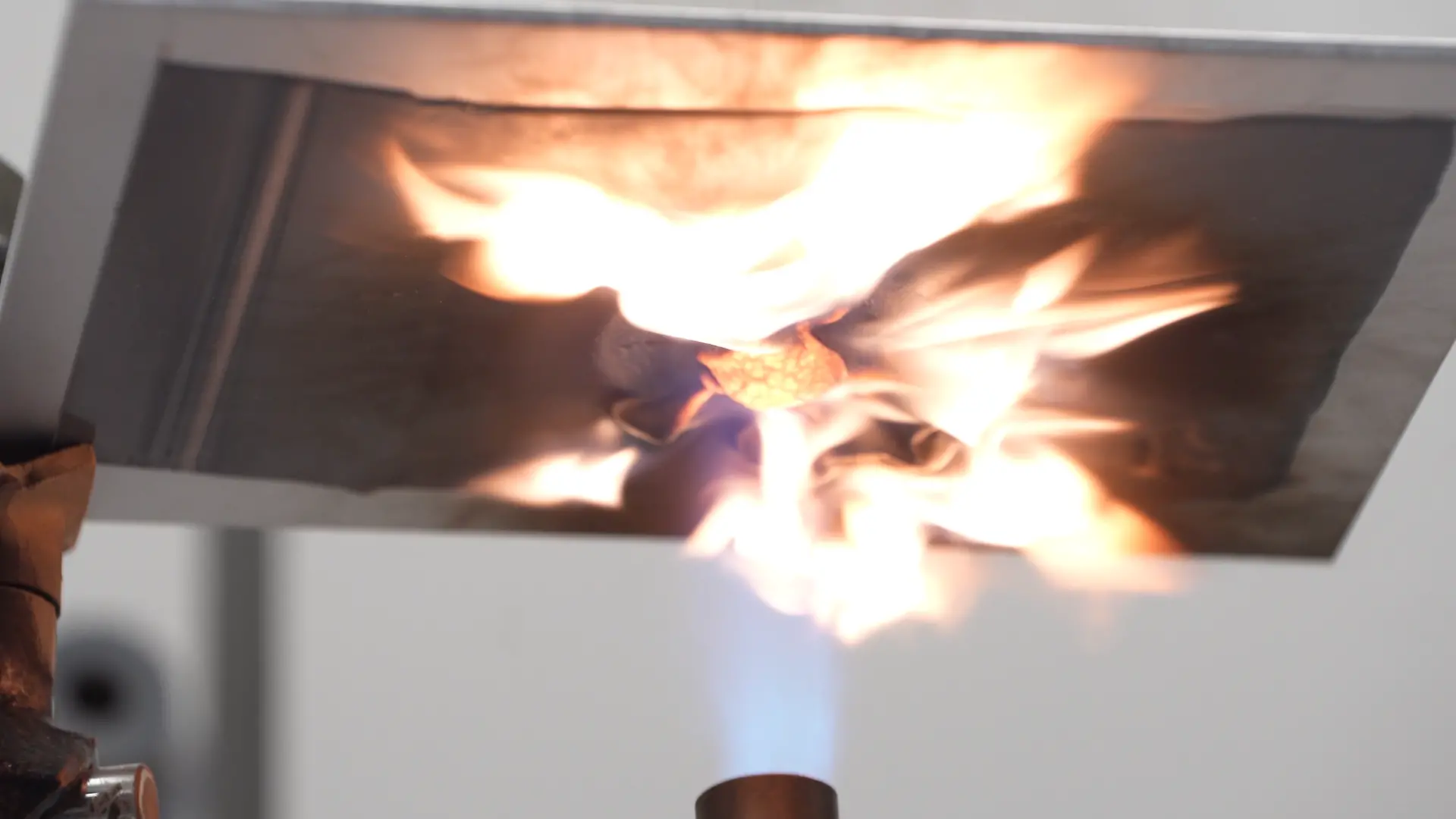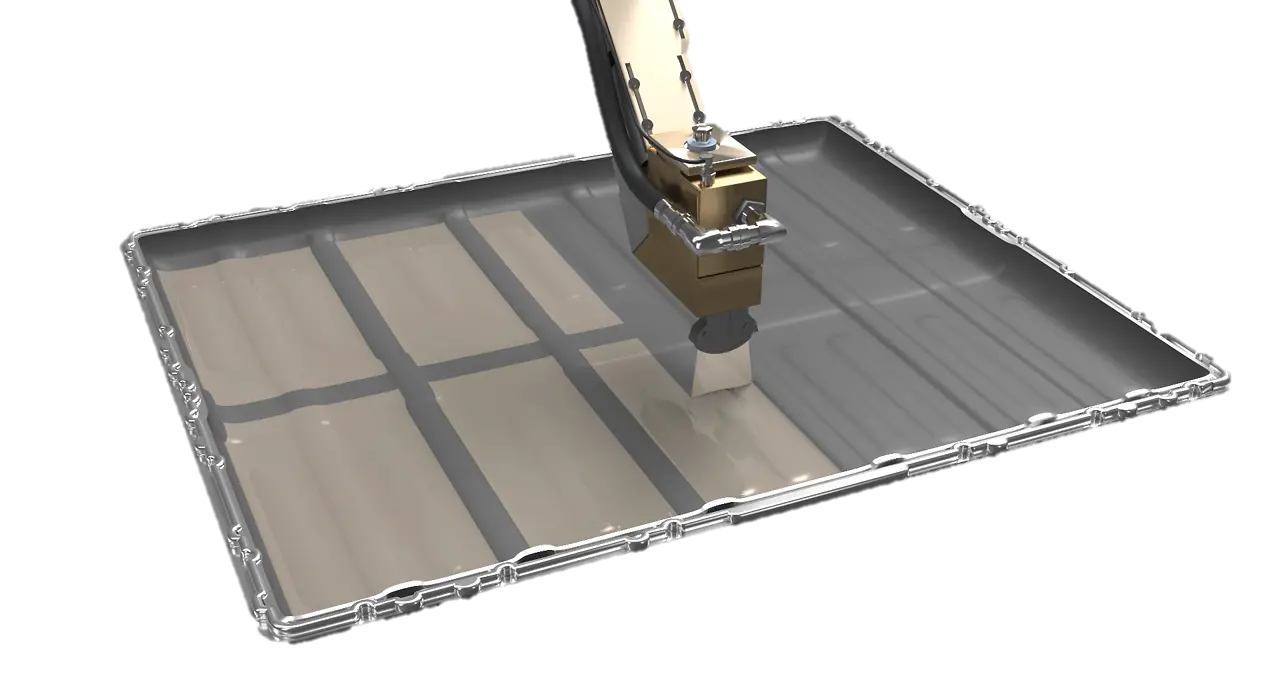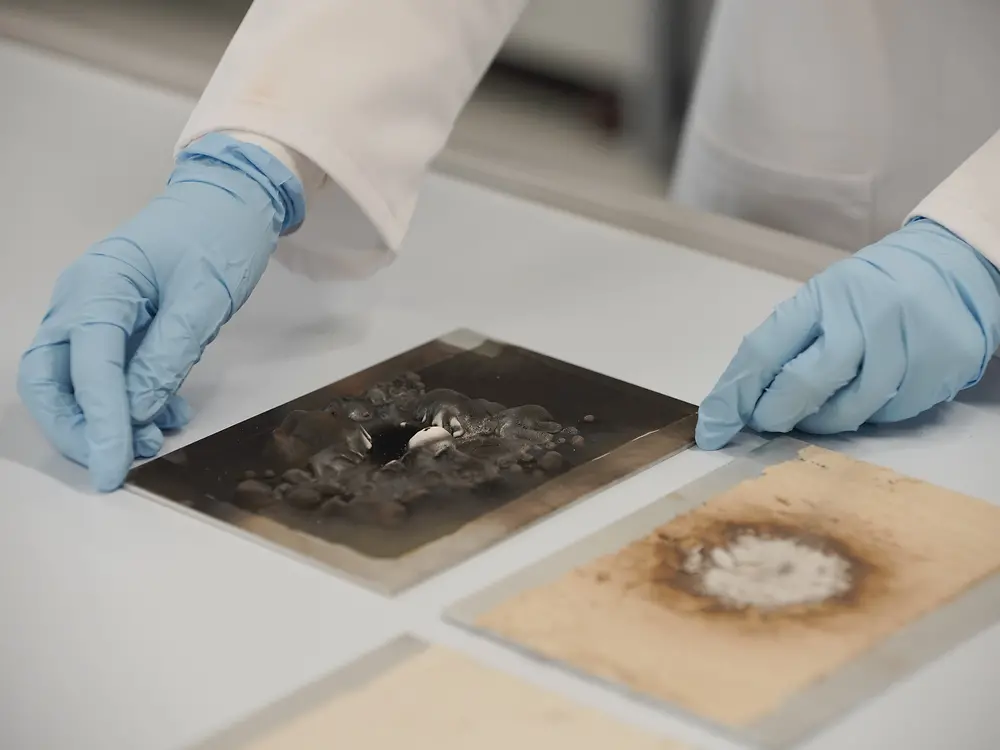ค้นพบแบรนด์และเทคโนโลยีจากหน่วยธุรกิจของเรา เทคโนโลยีกาวเฮงเค็ล (Henkel Adhesive Technologies) และ แบรนด์ผู้บริโภคของเฮงเค็ล (Henkel Consumer Brands)
25 เม.ย. 2565 Düsseldorf / Germany
Henkel launches new fire protection solutions for safer EV batteries
As the pace of EV adoption and innovation accelerates, OEMs and EV battery manufacturers are striving to develop more efficient ways to build batteries at scale. At the same time, fire protection remains critical to ensure vehicle batteries provide the best possible safety in the case of accidents and fires. This is especially important as regulatory demands become more rigorous. Hence, EV battery safety technologies that delay the spread of fire have never been more vital.
To take on this challenge Henkel, a leading partner to the automotive industry, has launched two new protective coating products designed to shield the battery housings against heat and fire in the case of a thermal runaway event - Loctite EA 9400 and Loctite FPC 5060. When applied to battery packs, the coatings help to inhibit and delay the spread of fires to protect the passengers as they evacuate the vehicle. Meanwhile, their efficient and cost-effective application processes ensure that manufacturers can continue to optimise battery production without compromising on safety.
“Battery safety is an increasingly important topic for OEMs and battery manufacturers alike,” explains Stephan Hoefer, Market Strategy Head for E-Mobility at Henkel. “Thermal runaway events are possible in any lithium-ion battery, but the key is to minimise the risks and consequences. At Henkel, we are seeking to minimise the impact of such events through effective and practical solutions that can delay the spread of fire. This is vital to ensure that passengers have sufficient time to evacuate the vehicle.”
Whether due to mechanical, thermal, or electrical incidents – thermal runaway events can occur when a battery cell enters into a heating state and ignites a fire that spreads to neighbouring cells. Battery safety solutions help to reduce or slow such events, thereby increasing time for vehicle evacuation. This time window is increasingly subject to regulation: China has already enacted regulations that specify a required time window and other markets are expected to follow suit in due course as regulatory frameworks for EV safety evolve.
“OEMs and battery manufacturers are challenged to find efficient solutions that support large-scale automated manufacturing and position them well against legal regulations. At Henkel we aim to anticipate our customers’ current and emerging challenges and hence developed purpose-built and tested products specifically to help them meet this demand for fire protection in EV batteries,” commented Uwe Franken, Global Technology and Product Development Leader for E-Mobility at Henkel. “The launch of two new Loctite coating products for fire protection demonstrate that battery safety is a key focus area for Henkel.”
Designed for automated mass production, Loctite EA 9400 and Loctite FPC 5060 can be applied either by “spray” or “flat stream” and both are compatible with common automated dispensing systems. In line with Henkel’s commitment to sustainability, Loctite 9400 and Loctite FPC 5060 both cure at room temperature, thereby helping to reduce energy consumption and emissions.
- Loctite EA 9400
Loctite EA 9400 is a two-component, active flame-retardant, epoxy-based fire protective coating designed for the battery pack housing. With minimising weight of EVs and batteries a high priority, the product has been designed to be applied in a thin layer that doesn’t add much weight to the battery. Thanks to its foaming characteristics and tough formulation for outstanding environmental resistance, Loctite EA 9400 can be applied on both the inside and outside of the battery pack housing to provide excellent versatility. As well as providing light-weight thermal protection, it also prevents battery box corrosion.
- Loctite FPC 5060
Also created for the battery pack housing, Loctite FPC 5060 is a one-component, water-based, inorganic material that does not form any smoke or fumes when exposed to flame. Its unique, inorganic formulation does not include any hazardous chemicals and produces no smoke, no fumes, and no carbon during a fire – thereby further protecting passengers.
“Electrification of transportation is a huge opportunity that also presents numerous overlapping challenges for OEMs such as efficiently scaling up production while ensuring the highest safety standards. This is where innovative materials and processes will be mission-critical,” explained Marvin Romberg, E-Mobility Business Development Manager EIMEA at Henkel. “As a long-time trusted partner to the automotive industry, Henkel is helping our customers stay ahead of the curve with state-of-the-art products built on pioneering research. We are also providing our customers with comprehensive support for process implementation and working in collaboration with dispensing equipment suppliers to deliver a coherent, joined up-approach across the entire value chain.”
Learn more about Henkel solutions for battery safety here.







